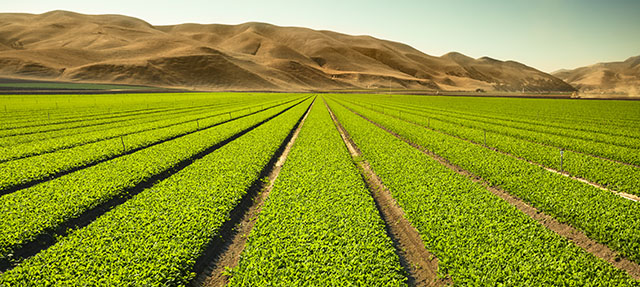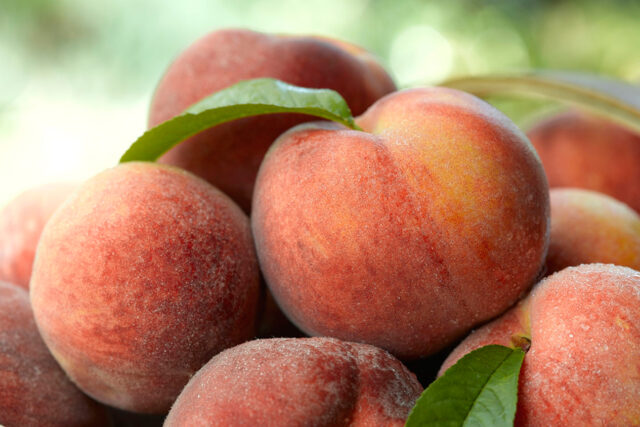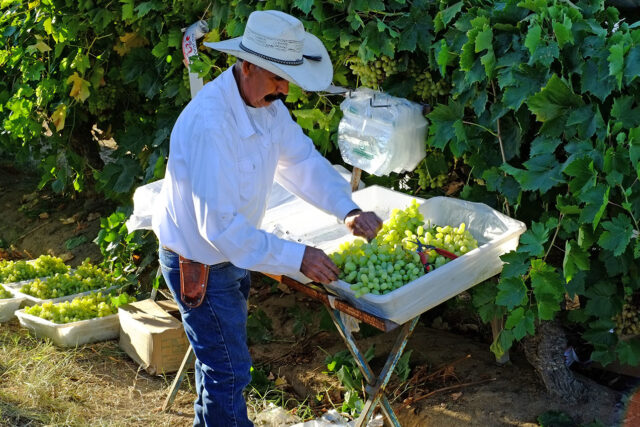Water supply concerns, regulations, labor issues, tariffs, climate change, and other challenges have prompted some rather dire predictions about the future of California agriculture. We talked to Dan Sumner—director of the UC Davis Agricultural Issues Center and a member of the PPIC Water Policy Center research network—about his research on California agriculture in 2050.
PPIC: How do you think California agriculture will change in the next few decades?
DAN SUMNER: The value of farm production in California has been growing for a very long time and is likely to continue to grow. Farmers have been shifting land and water to crops that generate more revenue per acre and per acre-foot of water. Tree and vine crops have replaced annual crops. For example, cotton acreage collapsed from more than 1.2 million Central Valley acres 30 years ago to just 260,000 now. And these days Central Valley farms are getting twice as much revenue from pistachios as from hay. The pace of the shift to crops that bring higher revenue per unit of land and water will likely slow in the coming decades simply because much of the transition has already occurred.
For many years now, California’s most valuable agricultural industry by gross revenue has been dairy. But the dairy industry has stopped growing—partly because it is expensive to haul hay in from places that have adequate water.
California dairy is also under pressure from economic implications of state regulations on climate and other environmental issues. Californians demand attention to environmental concerns, labor market conditions, energy costs, and other issues that generate regulation, and such regulations can be costly for farms. The result is some commodities that had been important in California will be grown elsewhere.
PPIC: How will climate change affect the state’s farms?
DS: It will drive many adaptations, including shifts in locations as farms plant crops better suited to new climate and market conditions. We also expect different pest problems. But given the close attention of researchers and growers to these issues, I don’t see unmanageable challenges in the next few decades.
It is important to recognize that global markets and climates interact, and so what economists call “comparative advantage” remains crucial to economic success. Let’s say climate change makes table grapes more expensive to grow here or moves the season earlier. But if climate change affects Mexican growing conditions even more, climate change could cause grapes to become more profitable and therefore expand in California. The crucial issue looking forward is what will grow well in California compared to other places and compared to other crops.
PPIC: What are important policy or regulatory drivers that could help the farm sector adapt to changing conditions?
DS: We’ll need all sorts of innovations in every sector, from banking, government institutions, and science to farm management. California agriculture is already innovative and flexible, but we’ll keep moving rapidly to adapt to the economic and environmental changes on the horizon. Regulations are a part of what is changing and a part of what agriculture is adapting to.
Farm labor cost and availability remain crucial drivers of the future of California agriculture. We need innovations to reduce labor per unit of output, but we also need policy and regulations that allow immigrants to continue to work in California.
The climate-water nexus is probably where we can gain the most from innovative regulations and adaptations. Climate change and water regulations, including groundwater regulations, will reduce California irrigation water availability. We’ll need to consolidate water use to fewer acres, possibly convert some land to dryland farming, and even idle some land. Fortunately, the Sustainable Groundwater Management Act (SGMA) is encouraging people to value water that once was taken for granted.
With far-sighted regulations, California can find more effective ways to store more water underground, and use it most effectively. For example, markets are crucial to provide incentives for groundwater recharge in the winter. If regulations continue to limit transfer of water among farms and from one year to the next, we will severely restrict incentives to adjust to climate change. I am confident that California will find a regulatory path to allow continued farm adaptation and flourishing.




